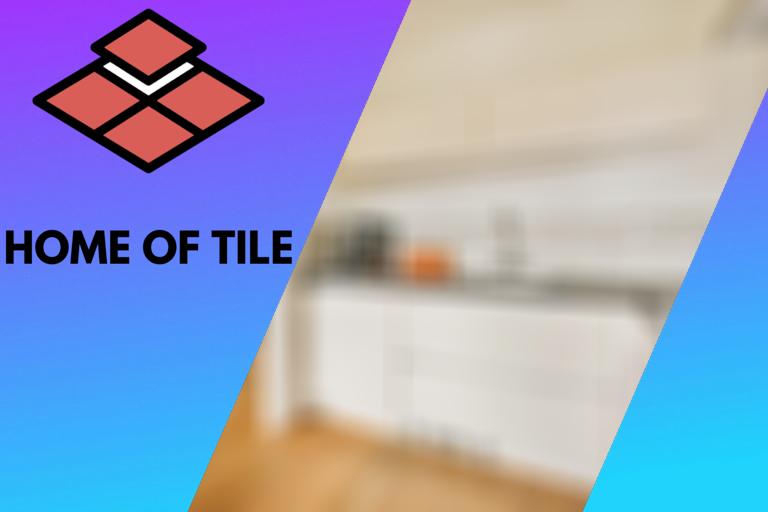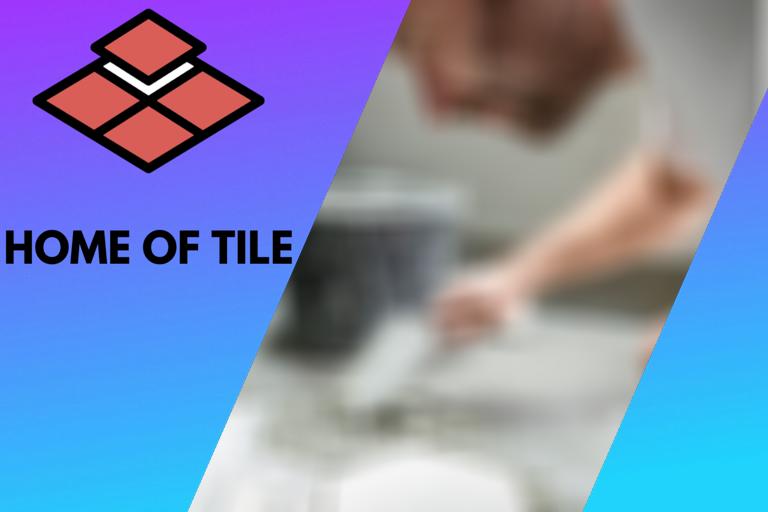Protect Your Tiles with a Waterproof Membrane. 25 things you should know
Discover the secret of a hassle-free, water-resistant tiling solution in our latest blog post exploring waterproof membranes for tiles. Save yourself the stress of unexpected leaks and damage with this innovative protective layer designed to preserve the integrity and longevity of your tiled surfaces.
Waterproof membrane for tile:
Waterproof membranes provide a vital barrier between tiles and the substrate, preventing water damage and issues like mold and mildew. Various types of membranes are available, including liquid-applied, sheet, cementitious, and vapor-permeable. Each has its advantages and disadvantages.
To ensure optimal performance, follow proper installation techniques such as surface preparation, adhering to recommended thickness, carefully sealing seams and joints, and inspecting for defects or damage. Choosing the right membrane and ensuring proper installation helps protect your tile investment long-term.

Discover the importance of waterproof membranes for tile installations, how they protect your home, and the options available. Uncover expert tips for choosing the right membrane and ensuring a successful, long-lasting tiled surface. Dive into this essential guide to learn more.
Contents
- 1 Water-Resistant Membrane for Tile Surfaces
- 2 Is a Waterproof Membrane Necessary Beneath Tile Installations?
- 3 Is it Possible to Install Tiles on a Waterproofing Membrane?
- 4 Is it necessary to utilize a membrane beneath tile installations?
- 5 What is the Most Effective Waterproof Tile?
Water-Resistant Membrane for Tile Surfaces
When it comes to tile installations, especially in areas exposed to moisture, having a reliable waterproof membrane is essential. A waterproof membrane acts as a barrier between the tile and the substrate, preventing water from penetrating the substrate and causing mold, mildew, and structural damage.
I will discuss the importance of waterproof membranes for tile, the different types available, and tips for proper installation.
• Types of Waterproof Membranes for Tile
Various types of waterproof membranes are available in the market, each with distinct advantages and disadvantages. I will discuss four common types of waterproof membranes suitable for tile installations.
1. Liquid-Applied Waterproofing Membranes
Liquid-applied waterproofing membranes typically comprise a polymer-based liquid applied directly onto the substrate. These membranes cure to form a flexible, rubber-like layer that covers the surface and prevents water penetration.
Some advantages of liquid-applied waterproofing membranes include the following:
- Seamless application with no seams or joints providing a continuous barrier
- Easy to apply in tight spaces and corners
- Can be used on a variety of substrates
The main disadvantage of liquid-applied membranes is proper surface preparation and waiting for the membrane to cure before tile installation can begin.
2. Sheet Waterproofing Membranes
Sheet waterproofing membranes are typically made of rubber or plastic materials formed into sheets or rolls. These membranes are attached to the substrate using adhesive, mechanical fasteners, or heat welding.
Some advantages of sheet waterproofing membranes include the following:
- Wide variety of materials available, such as rubberized asphalt and PVC
- Can provide a higher level of waterproofing protection compared to liquid-applied membranes
- Less labor-intensive when covering large areas
The main disadvantage of sheet waterproofing membranes is the need for proper seam overlaps and a proper bond between the membrane and the substrate.
3. Cementitious Waterproofing Membranes
Cementitious waterproofing membranes comprise a cement-based mixture applied to the substrate with a trowel or brush. These membranes harden to form a durable, rigid barrier with excellent water resistance.
Some advantages of cementitious waterproofing membranes include the following:
- Inherent bonding ability with the substrate
- Can be applied to damp surfaces
- May provide added structural strength
The main disadvantage of cementitious membranes is that they may not be suitable for areas subjected to significant movement or flexibility, as they can crack or lose adhesion.
4. Vapor-Permeable Waterproofing Membranes
Vapor-permeable waterproofing membranes allow water vapor to pass through but prevent liquid water penetration. These membranes are useful when there is a concern for moisture accumulation within the substrate, such as in basements or areas with high humidity.
Some advantages of vapor-permeable waterproofing membranes include the following:
- Reduced risk of substrate moisture buildup, which can lead to mold and mildew issues
- Can be used in conjunction with other waterproofing solutions
The main disadvantage of vapor-permeable membranes is that they may not provide the same waterproofing protection as other membrane types.
• Proper Installation of Waterproof Membranes for Tile
Following proper installation techniques for each membrane type is crucial to ensure the desired waterproofing performance. Below are some general recommendations for proper installation:
– Surface Preparation
Before applying any waterproofing membrane, clean the substrate to remove any dust, debris, or contaminants that could interfere with the membrane’s adhesion.
In some cases, particularly for liquid-applied membranes, it may be necessary to apply a primer to improve the bond between the substrate and the membrane.
– Thickness and Coverage
When applying a liquid-applied or cementitious waterproofing membrane, follow the manufacturer’s recommended thickness and coverage rates for the specific product. Insufficient membrane thickness can compromise its waterproofing performance.
– Seams and Joints
For sheet waterproofing membranes, carefully overlap and seal the seams and joints according to the manufacturer’s instructions. This will prevent water from penetrating beneath the membrane through these vulnerable areas.
– Inspection and Repairs
After installing the waterproofing membrane, inspect the surface for any defects or damage. Repair any issues according to the manufacturer’s guidelines before installing the tile.
• Final Thoughts on Waterproof Membranes for Tile
Selecting the appropriate waterproof membrane for your tile project is crucial for its long-term performance and durability.
By understanding the different types of membranes and their advantages and disadvantages and ensuring proper installation techniques, you can confidently protect your tile investment from water damage and enjoy its beauty and functionality for years.
Is a Waterproof Membrane Necessary Beneath Tile Installations?
Waterproofing is essential when installing tile in areas prone to water exposure or high humidity, such as bathrooms, kitchens, and outdoor spaces.
A waterproof membrane is a thin layer of water-resistant material applied between the substrate and the tile, serving as a barrier to prevent moisture from damaging the structure and causing mold and mildew problems. This begs the question: is a waterproof membrane necessary under tile?
• Defining the Need for Waterproofing
When dealing with a tile installation, examining the potential water exposure and the specific materials used in the project is crucial. The need for waterproofing depends on several factors:
- Location and usage of the tiled area
- The type of substrate (concrete, plywood, drywall, etc.)
- The tile material (porcelain, ceramic, natural stone, etc.)
- Building codes and industry standards
– Considering Location and Usage
Bathrooms, kitchens, and outdoor spaces often have water exposure, but not all require the same degree of waterproofing. In a shower or bathtub area, where water frequently comes into direct contact with the surface, a waterproof membrane is highly recommended to prevent water infiltration, structural damage, and microbial growth.
Waterproofing is less critical in kitchen backsplash or bathroom floors but still an essential measure to ensure long-lasting and functional tile installations.
– Examining Substrate Materials
Different substrates have varying levels of moisture resistance. Concrete, for instance, is dense and less susceptible to water damage, but plywood and drywall are more vulnerable.
If the substrate has a high risk of absorbing water, it is essential to use a waterproof membrane to prevent moisture-related problems, such as swelling and rotting of the material.
– Choosing the Right Tile Material
Tile materials also play a role in determining the need for waterproofing. Porcelain tile is dense and less porous than ceramic tile, making it more resistant to water and stains. On the other hand, natural stone is often more porous and prone to moisture infiltration.
In general, a waterproof membrane is essential when using natural stone, whereas the need for waterproofing may decrease slightly when using a more impervious tile.
– Understanding Building Codes and Industry Standards
Local building codes and industry standards, such as those established by the Tile Council of North America (TCNA) and the American National Standards Institute (ANSI), provide guidelines on best practices, including waterproofing requirements.
Adhering to these standards will ensure a successful and long-lasting tile installation.
• Types of Waterproof Membranes
Several waterproofing products are available for various applications and can fall into three significant categories:
- Sheet Membranes: These are flexible sheets of waterproof material rolled out, cut to size, and applied to the substrate with thin-set mortar or specialized adhesive. Sheet membranes, like Schluter Kerdi, provide a continuous barrier and are excellent options for shower and bathtub installations.
- Liquid Membranes: These are water-based coatings applied with a roller, brush, or trowel, creating a thin, flexible, and continuous waterproof barrier. Liquid membranes, like Hydro Ban from Laticrete or RedGard by Custom Building Products, require multiple coats and are suitable for various applications, including shower pans, bathroom floors, and kitchen backsplashes.
- Cementitious Membranes: These powder-based products are mixed with water and applied like cementitious paint with a brush or trowel. Although not as flexible as sheet or liquid membranes, cementitious membranes provide a robust and waterproof barrier for outdoor applications, such as patios, balconies, and pool decks.
When selecting a membrane, consult the product’s technical data sheet for specific application instructions and recommendations.
• A Necessity for Successful Tile Installations
Considering the potential water exposure, substrate material, tile type, and industry standards, it becomes apparent that waterproofing membranes are critical components for a successful and long-lasting tile installation.
Failure to apply an appropriate waterproof membrane can lead to water infiltration, structural damage, mold, and mildew, compromising the tile’s integrity and posing serious health risks.
In conclusion, whether you’re a professional tile installer or a DIY homeowner, always prioritize waterproofing in any tile installation involving water exposure or high-humidity environments.
Incorporating a waterproof membrane under the tile will protect the structure and ensure the beauty and longevity of your project for years to come.
Location | Need for Waterproof Membrane |
|---|---|
Bathrooms | Yes, especially for showers and wet areas |
Kitchens | Yes, particularly around sinks and areas prone to water exposure |
Basements | Yes, to prevent moisture intrusion and mold growth |
Outdoor patios and decks | Yes, to protect tiles from water damage and prolong their lifespan |
Living areas and bedrooms | Not necessary, unless the room is subject to frequent water exposure |
Is it Possible to Install Tiles on a Waterproofing Membrane?
When renovating or building bathrooms, a looming question is: Can you tile on a waterproofing membrane? The short answer is yes, but there are specific steps you must follow to ensure that the process is executed correctly.
I will cover the crucial aspects of tiling over a waterproofing membrane, including the types of membranes, tile selection, proper installation, and vital precautions.
• Types of Waterproofing Membranes
Before diving into tiling over a waterproofing membrane, let’s first examine the different types available on the market. There are three primary types of waterproofing membranes used in bathroom applications:
1. Sheet Membranes
These membranes are made from thin sheets of rubber or plastic and are typically applied with an adhesive backing. Sheet membranes are commonly used in bathroom applications due to their ease of installation and reliable waterproofing capabilities.
2. Liquid Membranes
As the name suggests, liquid membranes are applied as a liquid to the substrate using a roller or brush. Once dried, the liquid material forms a seamless waterproof barrier. Apart from being relatively easy to apply, liquid membranes offer some flexibility, making them suitable for use on uneven surfaces.
– 3. Cementitious Membranes
Cementitious membranes consist of a blend of cement, sand, and specific additives, which provide a water-resistant layer when applied to a substrate. This membrane type is known for its durability and is often used in commercial applications.
• Tile Selection
Choosing the right tile for your project is essential when installing tiles over a waterproofing membrane. It would be best if you considered the following factors when making your selection:
1. Tile Material
Tiles are available in various materials, including ceramic, porcelain, natural stone, and glass. Each material has its unique properties and suitability for different applications.
For example, porcelain and ceramic tiles are generally recommended for bathroom floors due to their durability and moisture resistance.
2. Tile Size
Tile size significantly affects a bathroom’s overall aesthetic and functionality. Larger tiles offer a more seamless appearance but require a flat and even surface for installation. In contrast, smaller tiles can better accommodate uneven surfaces but can make a space feel busier.
3. Slip-Resistance
Selecting tiles with adequate slip resistance is crucial, particularly for bathroom floors. Look for tiles with a high coefficient of friction (COF), which improves traction and reduces the risk of slipping.
• Proper Installation
Following the proper installation steps when applying tiles over a waterproofing membrane ensures the longevity and performance of your bathroom. The key steps involved in the process are as follows:
1. Surface Preparation
The surface on which the membrane and tiles must be installed must be thoroughly cleaned and free from moisture or contaminants. This may involve leveling the substrate or treating existing cracks or damage with a suitable repair material.
2. Membrane Installation
Apply the selected waterproofing membrane according to the manufacturer’s instructions, ensuring full, consistent coverage. Allow the membrane to cure for the specified time before proceeding with tile installation.
3. Tile Adhesive
Selecting an adhesive designed for your chosen membrane and tile materials is vital. The compatibility of the adhesive with the membrane is particularly crucial in maintaining the integrity of the waterproofing layer.
4. Tile Installation
Lay the tiles using a notched trowel, applying consistent pressure to ensure proper bonding with the adhesive. Regularly check for appropriate adhesive coverage on the back of the tiles and maintain consistent spacing and alignment.
5. Grouting and Sealing
Once the adhesive has appropriately bonded, apply grout between the tiles, ensuring that all joints are adequately filled. After the grout has cured, seal the tiles and grout lines as required. Sealing is particularly important in bathroom applications to protect surfaces from moisture and staining.
• Precautions to Consider
To prevent unnecessary complications or damage, it’s essential to keep the following precautions in mind:
- Proper Drainage: Ensure that your bathroom floor slips adequately towards the drain to prevent water from pooling on the surface.
- Expansion Joints: Remember to include expansion joints in your tile layout. This will allow for natural movement and expansion of the surface without compromising the tile installation or the integrity of the waterproofing membrane.
- Moisture Testing: Be sure to test the moisture levels of the substrate and membrane before applying tiles. High moisture levels can have a detrimental effect on the adhesive bond and the durability of the installation.
- Installation Timing: Avoid installing tiles on a fresh waterproofing membrane without allowing appropriate curing time. This can lead to the de-bonding of the membrane or tiles.
• Final Thoughts
In conclusion, it is possible to tile over a waterproofing membrane in bathroom applications, provided careful attention is given to proper surface preparation, tile selection, installation methods, and precautions.
By meticulously following each step and investing in materials best suited for your project, you can achieve a stylish and durable bathroom resistant to water damage.
| Can you tile on the waterproofing membrane? |
|---|
| You can install tile on a waterproofing membrane, which is designed to accept tile installations. Choosing the appropriate membrane and following the manufacturer’s guidelines for the membrane installation and tile application is essential. |
Is it necessary to utilize a membrane beneath tile installations?
When laying tile, one of the most common questions is whether or not to use a membrane. I will discuss what a membrane is when it should be used, its benefits, the different types of membranes available, and how to install it.
I aim to provide a comprehensive guide for those considering using a membrane under their tile.
• The Role of Membranes
Before diving into the specifics, let’s first understand the primary purpose of membranes in tile installations. A membrane, an underlayment or uncoupling layer, separates the tile and substrate (such as concrete or plywood subfloor) to effectively manage any movement or stress between the two surfaces.
This helps to prevent the tile from cracking, delaminating, or lifting over time.
• When to Use a Membrane
In several situations, using a membrane under your tile is highly recommended. These include:
1. Uncoupling
When installing tile over a substrate susceptible to movement, such as a wooden subfloor, a membrane can help reduce the risk of damage from expansion and contraction. This is particularly important in areas with frequent temperature and humidity changes.
2. Moisture Management
Using a waterproof membrane is essential in areas where moisture is a concern, such as bathrooms, showers, and kitchens. Waterproof membranes prevent moisture from penetrating the substrate, reducing the risk of mold and structural damage.
3. Crack Isolation
For substrates with existing cracks or potential for cracking, such as a new concrete slab, utilizing a crack isolation membrane can help prevent those cracks from transferring to the tile layer.
4. Sound Reduction
Certain membranes can also provide sound-reducing properties, making them an excellent choice for multi-story buildings or rooms where noise is a concern.
• Benefits of Using a Membrane
The primary benefits of using a membrane under your tile installation can be summarized as follows:
- Protects the tile from damage due to movement and stress in the substrate
- Increases the longevity and durability of the tile installation
- Prevents moisture penetration into the substrate, reducing the risk of mold and structural damage
- Can provide sound-reducing properties
• Types of Membranes
Several types of membranes are available, each with unique properties and applications. Some of the most commonly used membranes in tile installations include:
1. Sheet Membranes
Sheet membranes, such as DITRA or DITRA-HEAT, are made from a lightweight polyethylene material and are available in rolls or sheets. They feature a grid pattern with air channels that provide uncoupling properties, while some also provide waterproofing and heat management.
2. Liquid Membranes
Liquid membranes, also known as liquid-applied membranes or roll-on membranes, are watertight coatings that can be brushed, rolled, or trowelled onto the substrate. This membrane type is ideal for waterproofing and crack isolation applications and typically dries to form a flexible, rubber-like layer.
3. Peel-and-Stick Membranes
Peel-and-stick membranes, such as RedGard or NobleSeal, are adhesive-backed sheets applied directly to the substrate. These membranes are typically rubberized asphalt, offering excellent waterproofing and sound reduction properties.
• How to Install a Membrane
Here’s a step-by-step guide to installing a membrane under your tile:
- Prepare the substrate: Ensure the substrate is clean, free from debris or contaminants, and leveled. Fill any dips, holes, or cracks if necessary.
- Select the appropriate membrane: Choose the membrane that best suits your needs and specific application based on the factors discussed earlier in this guide.
- Cut or measure the membrane to size: Ensure the membrane covers the entire surface to be tiled, and cut or measure it accordingly.
- Apply the membrane: Follow the manufacturer’s instructions for applying the membrane. This may involve adhering the membrane directly to the substrate, spreading thin-set mortar, or using a specific type of adhesive.
- Press the membrane firmly into place: Use a roller or other appropriate tool to ensure the membrane is properly bonded to the substrate and remains flat, minimizing air bubbles.
- Allow the membrane to set: Follow the manufacturer’s guidelines for drying or curing times before installing the tile.
- Install the tile over the membrane: Proceed with your tile installation as you normally would, following industry best practices and guidelines.
In conclusion, using a membrane under your tile installation can significantly improve your tile work’s durability, longevity, and performance.
By understanding the various types of membranes available and selecting the one that best suits your specific application, you can help ensure a successful tile installation that lasts for years to come.
What is the Most Effective Waterproof Tile?
Tiles have long been popular in bathrooms and kitchens due to their water-resistant properties. However, the effectiveness of your tile installation in keeping water and moisture out of your space is only as good as the waterproofing methods you implement.
Let’s explore the various tile waterproofing options and determine the best fit for your needs.
• Membranes: An Essential Component of Tile Waterproofing
Waterproofing membranes are among the most important components of an effective tile waterproofing solution. They serve as a barrier between the tile and its substrate, preventing water and moisture from seeping through and causing damage.
Several types of membranes are available, each with specific applications and advantages.
– Liquid Applied Membranes
Liquid-applied membranes are among the most versatile and widely used forms of waterproofing. They come as a liquid rolled, brushed, or sprayed onto the tile’s substrate. Once dried, the liquid forms a continuous, watertight barrier beneath the tile installation.
Pros:
- Easy application
- Fully customizable to fit any surface shape
- Can be used in indoor and outdoor applications
- Provides a smooth surface for tile installation
- Compatible with a wide variety of substrates
Cons:
- Requires expert skills for proper installation
- Requires proper curing time, which may delay the project
- May not be suitable for areas with heavy foot traffic or water exposure
– Sheet Membranes
Sheet membranes are prefabricated rolls of waterproofing material, typically made from rubber, thermoplastics, or bituminous compounds. These sheets are adhered to the substrate using a specified adhesive or heat welding.
Pros:
- Can be installed quickly
- Suitable for a wide range of applications
- Highly durable and resistant to heavy foot traffic
- Most variants are puncture, tear, and chemical-resistant
Cons:
- Requires precise measurements and cutting during installation, leaving little room for error
- Seams may be susceptible to water penetration if not properly sealed
• Surface Treatments: Boosting Tile Water Resistance
In addition to waterproofing membranes, treating the tile surface can further enhance its water resistance capabilities. Surface treatments like sealers and grouts help keep the tile surface watertight and help maintain a clean, attractive aesthetic.
– Tile Sealers
Tile sealers are applied directly to the tile’s surface, providing a protective barrier against water, stains, and daily wear and tear. Depending on the type of tile you’re working with, it may already have a moisture resistance level.
However, applying a sealer enhances this attribute and further prolongs the lifespan of your tile installation.
Pros:
- Enhances tile’s water resistance and durability
- Protects tile surface from stains and discoloration
- Can be used for both glazed and unglazed tiles
Cons:
- Some sealers need to be reapplied periodically
- Some sealers may alter the tile’s appearance, becoming more glossy or matte
– Grouts
Grout is the material used to fill the gaps between tiles. High-quality, waterproof grout is essential for an effective tile waterproofing system. There are two main types of grout: cement-based and epoxy-based.
Cement-Based Grout
Cement-based grout is the most common type, composed of cement, sand, and various additives to enhance its performance. It is mixed with water and applied to the tile joints, where it sets and hardens.
Pros:
- Affordable and versatile
- Available in a wide range of colors
- Can be easily cleaned and maintained
Cons:
- May require periodic sealing to maintain waterproofing qualities
- Can be prone to cracking or shrinking over time
Epoxy Grout
Epoxy grout is a two-part system composed of epoxy resin and hardener. This flexible and durable material bonds securely with the tile edges, providing excellent water resistance, stain resistance, and overall durability.
Pros:
- Highly water-resistant and durable
- Stain-resistant and easy to clean
- Does not require sealing
Cons:
- More expensive than cement-based grout
- Can be challenging to work with
• The Best Tile Waterproofing Method: A Personalized Approach
Determining the best tile waterproofing method depends on your specific needs and preferences. A combination of a reliable waterproofing membrane, surface treatments, and high-quality grout will ensure an effective, long-lasting tile installation.
In particular, I recommend using a liquid-applied membrane for its versatility and compatibility with various substrates. Opting for epoxy grout will greatly enhance your tiled area’s overall durability and water resistance.
Careful planning, proper installation, and regular maintenance are the keys to a successful, waterproof tile installation. Always consult professionals or seek expert advice before undertaking any tile waterproofing project.
Material | Water Resistance | Advantages | Disadvantages |
|---|---|---|---|
Porcelain | High | Durable, low maintenance, and available in various styles | Can be slippery when wet and can be difficult to install |
Ceramic | High | Higher cost requires sealing for water resistance, and prone to staining | Less durable than porcelain and can chip easily |
Natural Stone | Easy to install, budget-friendly, and water resistant | Varies; slate and granite are highly water resistant, while marble and limestone are not | Higher cost requires sealing for water resistance, and is prone to staining |
Vinyl | High | Easy to install, budget friendly, and water resistant | Can look less high-end compared to other options |








